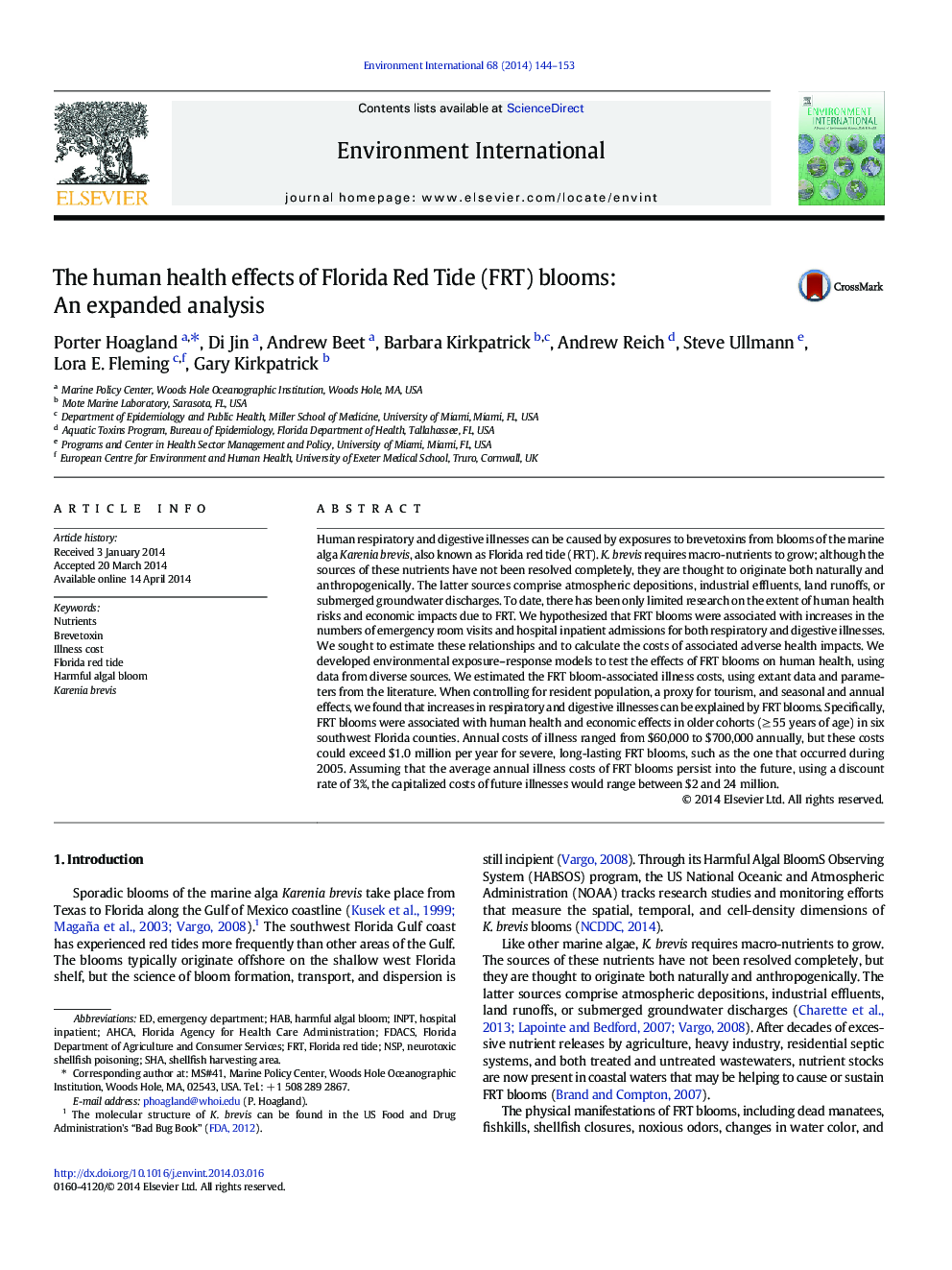| کد مقاله | کد نشریه | سال انتشار | مقاله انگلیسی | نسخه تمام متن |
|---|---|---|---|---|
| 6314021 | 1619060 | 2014 | 10 صفحه PDF | دانلود رایگان |

- Toxic Florida red tides (FRTs) rely on nutrients supplied by nature or humans.
- Coastal FRTs may cause both respiratory and digestive human illnesses.
- Environmental exposure-response models can help predict FRT-related illnesses.
- FRT exposures can be measured by environmental sampling or management events.
- Costly FRT-related illnesses occurred among older cohorts in 6 SW Florida counties.
Human respiratory and digestive illnesses can be caused by exposures to brevetoxins from blooms of the marine alga Karenia brevis, also known as Florida red tide (FRT). K. brevis requires macro-nutrients to grow; although the sources of these nutrients have not been resolved completely, they are thought to originate both naturally and anthropogenically. The latter sources comprise atmospheric depositions, industrial effluents, land runoffs, or submerged groundwater discharges. To date, there has been only limited research on the extent of human health risks and economic impacts due to FRT. We hypothesized that FRT blooms were associated with increases in the numbers of emergency room visits and hospital inpatient admissions for both respiratory and digestive illnesses. We sought to estimate these relationships and to calculate the costs of associated adverse health impacts. We developed environmental exposure-response models to test the effects of FRT blooms on human health, using data from diverse sources. We estimated the FRT bloom-associated illness costs, using extant data and parameters from the literature. When controlling for resident population, a proxy for tourism, and seasonal and annual effects, we found that increases in respiratory and digestive illnesses can be explained by FRT blooms. Specifically, FRT blooms were associated with human health and economic effects in older cohorts (â¥Â 55 years of age) in six southwest Florida counties. Annual costs of illness ranged from $60,000 to $700,000 annually, but these costs could exceed $1.0 million per year for severe, long-lasting FRT blooms, such as the one that occurred during 2005. Assuming that the average annual illness costs of FRT blooms persist into the future, using a discount rate of 3%, the capitalized costs of future illnesses would range between $2 and 24 million.
Journal: Environment International - Volume 68, July 2014, Pages 144-153